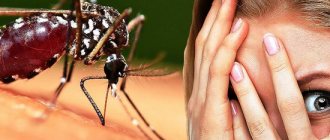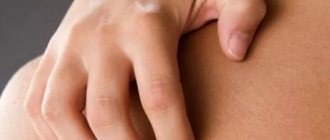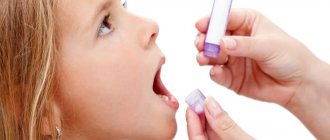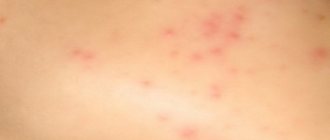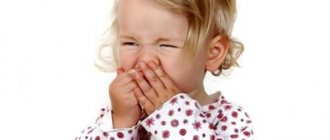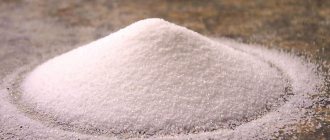Reasons for development
Allergy to insect bites is a serious problem faced by a significant proportion of modern children, despite the obvious successes of mankind in improving insecticidal agents that destroy blood-sucking parasites.
Three genera of mosquitoes are common in Russia. These are Culicidae, Anopheles and Aëdes corresponding to common, malarial mosquitoes and “biters”. The former mainly live in cities, living in semi-basements and basements, while the rest prefer natural conditions in close proximity to water bodies.
Blood-sucking mosquitoes can cause culicidosis, a pathological reaction to an insect bite. Only females feed on blood, since this biological substance is the basis of the egg reproduction cycle. When piercing the victim's skin, she simultaneously injects saliva into the wound, containing anticoagulants, complex proteins and other substances.
The immune system produces antibodies to the components of the insect's biological fluid. They actively interact with antigens and T-lymphocytes, which in turn leads to local cell damage and the release of histamine into the bloodstream. The intensity of the immunobiological reaction depends on a number of factors:
- The current state of the child’s immunity;
- Concentrations of allergens and their types in mosquito saliva;
- The presence of underlying acute and chronic diseases, including the autoimmune spectrum;
- Age and gender.
The pathological reaction in children after mosquito bites can manifest itself either slightly or systemically, creating the preconditions for severe complications, deterioration in quality of life, and chronic health problems.
The danger posed by mosquitoes
There is probably not a single person among us who has not been bitten by a mosquito at least once in his life. And for most people this happens quite often. Especially in summer. Small and annoying mosquitoes crawl into small cracks, often fly into apartments and houses, and cause us a lot of trouble not only in the form of annoying squeaks, but also in the form of red itchy bumps on the body. It just so happens that mosquitoes feed on blood. They bite people simply because they want to satisfy their hunger. Moreover, botanists claim that only a female mosquito is capable of biting, since she needs protein for her offspring. Having engorged itself with blood, the female lays eggs and then dies. Males live off plant nectar and are not dangerous to people.
There are different types of mosquitoes. In our region, the most common spring species are Ochlerotatos, squeaking mosquitoes and malaria mosquitoes.
A mosquito bite does not go away without a trace. It leaves behind the following consequences:
- slight swelling at the site of the bite,
- redness at the location of the bite,
- strong itching sensation.
Access to human blood occurs when a mosquito pierces a capillary or blood vessel with a special proboscis. Usually he chooses a tender place on the human body. When a mosquito bites, it secretes a special saliva that acts as a local anesthetic. This is necessary in order to reduce the sensitivity of the body during the bite itself. This saliva also prevents blood from clotting so that the mosquito can consume the required amount. It is this saliva that causes all of the above symptoms. They can be strengthened by scratching the bite site. Then the mosquito saliva will expand its influence to nearby areas.
A mosquito bite is not toxic because it has no poison. But it has a different danger. Even an ordinary squeaking mosquito can cause serious harm to health. Mosquitoes are believed to be disease carriers. By injecting their saliva into the blood, they can easily introduce an infection into the body. Among the consequences of mosquito bites are the following diseases:
- eczema,
- meningitis,
- helminthiasis,
- malaria,
- fever,
- Japanese encephalitis,
- tularemia,
- setariasis,
- filariasis (in Egypt),
- West Nile virus (in the USA).
Diseases carried by mosquitoes are called vector-borne diseases. Most often they can be obtained in tropical countries. Therefore, before traveling to the tropics, it is necessary to receive certain vaccinations in order to insure yourself against vector-borne diseases. The body of a European person tolerates them with particular difficulty, since his immune system is not adapted to such diseases. Also, the danger lies in the fact that mosquito bites are usually not noticeable, and if an infection occurs with some kind of disease, its symptoms may not be felt for a long period. Diagnosing such diseases in regions where they are not common can be very difficult. Therapy also has its own characteristics, since conventional antibiotics and other medications may not have the desired effect.
In addition to such ailments, mosquito bites can cause allergic reactions. And although this allergy is not as common as the phenomena from bee or wasp stings, it still happens sometimes. It can be recognized by the following signs:
- swelling at the bite site,
- headache,
- nausea,
- high body temperature,
- suffocation,
- disturbance of consciousness,
- hives,
- violation of vascular tone of the nose,
- bronchospasm.
If a rash, especially in a child, is accompanied by fever, difficulty breathing, swelling of the face, and pain, this is a good reason to call an ambulance.
Allergy symptoms after mosquito bites
As modern clinical practice shows, mosquito bites in children cause local allergies, manifested by the following reactions:
- Severe itching and swelling in the bite area;
- Redness and hyperemia of the skin;
- Formation of a rash of urticarial or papular nature.
In the presence of increased sensitivity to the components of insect saliva, against the background of secondary presuming circumstances, prerequisites for more severe allergic manifestations are formed:
- Dermatic. They include the appearance of blisters, an extensive eczema-type rash, a change in the shade of the epithelium;
- Respiratory. Caused by a systemic immune response. Manifested by a dry cough, runny nose, itching in the nasal passages, wheezing in the lungs and attacks of suffocation;
- Visual. Tearfulness, severe irritation of the eyes, swelling of nearby skin are observed;
- Gastrointestinal. Rarely formed. Include colic, vomiting with nausea, constipation or diarrhea, and other dyspeptic disorders.
In the absence of first aid and proper subsequent treatment, complications arise as the pathology develops:
- Quincke's edema. Complex angioneurotic syndrome of allergic nature. It manifests itself as extensive swelling throughout the body. In the absence of conservative therapy, hypercapnia develops, the risks of coma and death increase;
- Anaphylactic shock. An immediate severe complication that develops within 5-20 minutes. Forms severe pain throughout the body, generalized itching, drop in blood pressure, bronchospasm, hypoxia, and fainting. The mortality rate from anaphylactic shock in children reaches 20 percent, even with medical care.
First aid
As part of providing first aid to a child, the following actions are performed:
- Cold is applied to the swelling, constricting peripheral blood vessels and relieving itching and pain. It is more convenient to use ice wrapped in several layers of material. Time for one procedure is up to 15 minutes, after which you need to take a 10-minute break so as not to overcool the skin;
- The damaged areas are lubricated with soda solution. Recipe for the product: 1.5 teaspoons of the substance per glass of water;
- Available antihistamines are used orally - diazolin, loratadine or cetirizine;
- Ointments are applied to the skin - streptoderm, triderm or fluorocort.
The above steps only apply to mild to moderate allergies. If a severe systemic reaction occurs, consult a doctor immediately.
Diagnostics
Urticaria is diagnosed visually by a dermatologist. To confirm the allergic nature of the disease, skin provocative tests and a blood test for lg-E-specific antibodies are performed.
The first step is to stop exposure to the allergen if possible. Next, if prescribed by a doctor, you must take an antihistamine (loratadine, fexofenadine, cetirizine). To reduce itching, you can use sunburn cream, and also change to cotton clothes.
note
On our portal you can read a detailed article about symptoms, types and treatment
hives
If Quincke's edema develops, low blood pressure, nausea, vomiting, or loss of consciousness, you should immediately call an ambulance.
The action of the allergen that caused the reaction ceases. In addition, the patient should switch to an elimination diet that excludes foods with a large number of allergens (chicken, citrus fruits, nuts, eggs, strawberries, spices, foods with a high content of dyes).
In acute cases of urticaria, antihistamines are prescribed.
In the case of the development of a severe form of the disease, infusion antihistamines, corticosteroids (prednisolone, dexamethasone), calcium preparations that reduce sensitivity to allergens (calcium chloride or gluconate) are used; when the allergen is taken orally, gastric lavage is performed, and activated carbon and other sorbents are also used.
For urticaria, the use of codeine, aspirin, including its derivatives, and ACE inhibitors is prohibited.
Preventive measures
People who experience attacks of allergic urticaria are also prone to developing urticaria in response to other external factors: light, heat, cold, pressure, mechanical damage to the skin.
To ensure that allergies similar to mosquito bites bother you as little as possible, you should adhere to the following recommendations:
- Avoid stress; on the recommendation of a doctor, it is possible to take mild herbal-based sedatives.
- Avoid allergenic factors to which the patient is hypersensitive.
- Stop smoking and drinking alcohol.
- Be exposed to direct sunlight as little as possible (sunbathing is contraindicated). Also avoid prolonged exposure to high and low temperatures, use creams that protect from ultraviolet radiation and heat, and from cold.
- Take a shower, wash your face and wash your hands only with warm water, using soaps with skin-softening and moisturizing additives, and dry with soft towels.
- Do not take aspirin, codeine, ACE inhibitors.
- Do not use wardrobe items that put excessive pressure on the skin (tight clothing, belts, suspenders). Give preference to cotton clothes.
- Hypoallergenic diet, healthy eating.
- Treat diseases of the gastrointestinal tract and liver, infections in a timely manner.
- Maintaining a daily routine, alternating work and rest.
All this will prevent the occurrence of an attack of hives, which will make life much easier for allergy sufferers.
One of the most common signs of allergic reactions is the appearance of red spots, rashes, blisters and other unpleasant symptoms on the skin. And these spots are always accompanied by itching, burning, and also bring great discomfort.
Sometimes small blisters appear on the skin, reminiscent of a mosquito bite. This could really be an insect bite, or it could be a sign of an allergic reaction of the body to some allergen.
Every person is familiar with mosquito bites firsthand, especially in the summer. And after an insect bite, a rash forms on the skin, which constantly itches. At night, the itching may intensify, leading to the person scratching the bite until it bleeds.
But if such a rash in the form of a mosquito bite appears in winter, when contact with various insects is absolutely excluded, then the question arises: what are these rashes and why did they appear?
The first and most logical answer to this question is allergy, or rather its type - urticaria.
If an allergic reaction in the form of urticaria is detected, you should consult a doctor
Outpatient and inpatient treatment
If a severe form of pathological reaction to mosquito bites develops, the child is subject to outpatient treatment or hospitalization. The specific treatment regimen and duration of drug use are prescribed exclusively by the doctor. The last one is a pediatrician, allergist, dermatologist, resuscitator and other specialized specialist as necessary.
Emergency care for the development of anaphylactic shock
It is performed in an intensive care unit or by an ambulance team arriving at the scene. General scheme:
- Apply a tourniquet above the mosquito bite.
- Use of adrenaline. Intravenous administration. Dosage – 0.2-10 milliliters of a 0.1 percent solution, depending on the severity of the condition and signs of swelling of the respiratory system.
- Prednisolone injections. Intramuscular administration. Dosage – 1-5 milligrams of glucocorticosteroid per 1 kilogram of the child’s body weight, depending on the severity of the condition.
- Administration of antihistamines. Slow intravenous injection. The drug of first choice is suprastin or tavegil. For bronchospasm, aminophylline is used. Dosage – 1-10 milliliters of the drug, depending on the severity and stage of anaphylactic shock.
- Intubation. It is performed when acute respiratory failure increases, threatening suffocation for a small patient. The first choice procedure is endotracheal tube insertion. If it is ineffective, a conicotomy or tracheotomy is performed.
Subsequent treatment after overcoming the most acute period of the allergic reaction includes the use of leukotriene inhibitors, decongestants, as well as concomitant symptomatic therapy and protection of the child’s internal organs. A wide range of drugs is used - from cardiovascular drugs, anticoagulants, hepatoprotectors to vitamin-mineral complexes and intravenous drips of saline and glucose.
Allergy or not
It is very important to learn to distinguish an allergic reaction from the norm. Basically, the affected area will simply become red and slightly swollen, and it may itch and cause discomfort, especially at night. Some babies scratch it so much in their sleep that they can create a wound into which infection can easily penetrate. The individual reaction of different children to mosquito bites can vary greatly. Some people swell more, others less; the swelling may turn pink or remain flesh-colored.
An allergy to mosquito bites in a child is called culicidosis, but it occurs very rarely. All allergy sufferers are at risk, especially those who are intolerant to insect poisons.
Folk remedies for allergies after mosquito bites for children
Official medicine does not recommend using traditional medicine recipes. Non-traditional remedies contain herbal components that can independently act as allergens for the child’s body, which can lead to the development of additional complications - Quincke’s edema, anaphylactic shock.
In some cases, it is allowed to use traditional medicine recipes after the end of the acute phase of the allergic reaction as an addition to drug therapy. Procedures require mandatory approval from the attending physician!
- A series. One teaspoon of the product is brewed in 300 milliliters of boiling water, after which it is used as a replacement for tea;
- Celandine. One tablespoon of dry herb is brewed in 500 milliliters of hot water, infused for 3 hours. The liquid is filtered and consumed 1/4 cup 3 times a day;
- Celery. From 15 fresh bunches of the plant you need to extract liquid using a juicer. 3 teaspoons of sugar are added to the product, after which the juice is mixed, infused for 30 minutes and consumed 1 tablespoon 2 times a day 1 hour before meals.
Prevention measures
There are no specific medications or vaccines against allergies. General preventive actions include preventing direct contact of the child with mosquitoes. Possible procedures involve the use of:
- Insecticidal repellents. It is possible to use fumigators at home (plates, liquids in containers) or creams or sprays on clothes/skin when the child is outside. The insecticides purchased must be safe for children;
- Dense mosquito net. It can be placed both in a nursery or other room where the child is constantly located, and on a stroller for walks in the fresh air;
- Ultrasonic mosquito repeller. A stationary emitter is installed in the room, operating from a household power supply. For outdoor walks, a portable version of the device is used, powered by batteries and rechargeable batteries and attached to clothing or a stroller.
